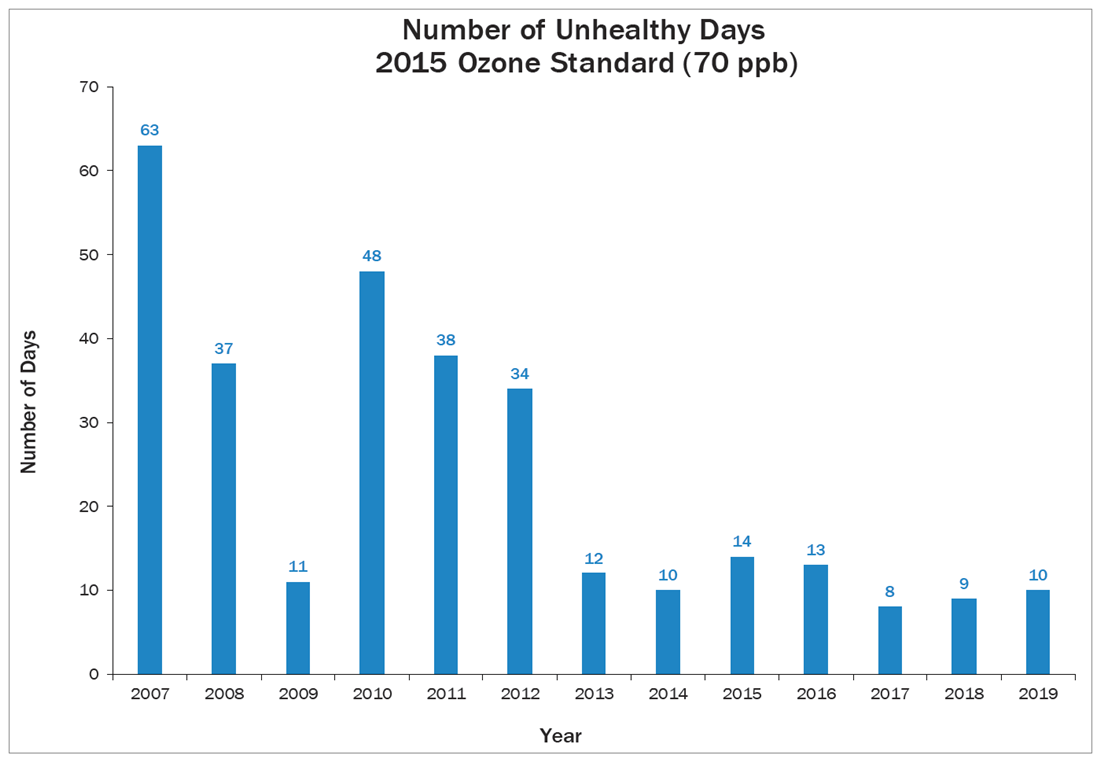According to COG’s latest Regional Air Quality Update, all six pollutants regulated by the Clean Air Act—carbon monoxide, lead, ground-level ozone, nitrogen dioxide, particulate matter, and sulfur dioxide—are trending downward in the region.
All but one pollutant, ground-level ozone, meet federal health-based air quality standards.
“It’s really a major issue of public health and safety, and that’s why we focus so much attention on it at the Council of Governments,” explained David Snyder, 2019 Metropolitan Washington Air Quality Committee Chair and City of Falls Church Council Member David Snyder in an interview with Comcast Newsmakers.
Metropolitan Washington Air Quality Committee Chair David Snyder discusses the region's air quality on Comcast Newsmakers.
This progress can be attributed to more than a decade of action at the federal, state, and local government levels to reduce emissions from power plants, passenger vehicles, and heavy-duty diesel engines as well as programs to improve energy efficiency and renewable energy use.
Despite this good news, air quality monitors show that the region’s residents continue to breathe unhealthy air too frequently.
During the 2019 ozone season, there were 10 unhealthy ozone days recorded, signaling there is still more to be done to reduce pollutant levels further and protect the public’s health. For example, government can implement measures to reduce pollution such as enhanced energy efficiency in buildings, green purchasing programs, reduced vehicle idling, and green electricity generation. When there are unhealthy air days, residents can take actions such as postponing mowing, filling up gas tanks during the evening hours, using transit or carpools, and using less electricity.

Source: COG (2019 data is preliminary and subject to change)
“It’s really a combined effort that’s brought about improvement…and can bring about further improvement,” said Snyder. “If we relax, we’ll see a return of the really bad air that we used to have as recently as 2000.”
MORE: Air Quality Progress Dashboard